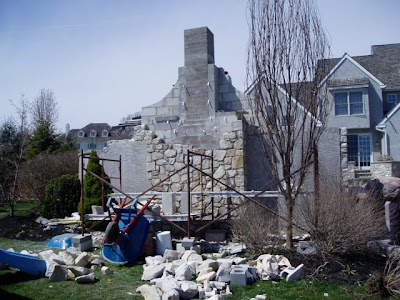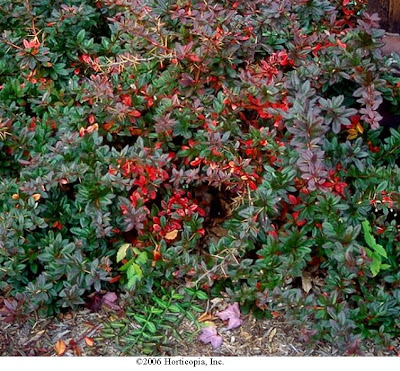 Euonymus japonicus 'Aureo-marginatus'
Euonymus japonicus 'Aureo-marginatus'Spindletree, Box-leaf Euonymus, Evergreen Euonymus, Japanese Euonymus, Spindle Tree
Type Shrub, woody plant
Hardy range 6B to 10A
Height 4' to 5' / 1.20m to 1.60m
Spread 4' to 5' / 1.20m to 1.60m
Growth rate Average
Form Oval, upright or erect and vase shaped
Exposure Full shade to full sun
Persistence Evergreen and semi-evergreen
Bloom Color Green and white
Bloom Time Spring and Summer
Environment
This plant tolerates salt well.
This plant will grow in moist soil.
Suitable soil is well-drained/loamy, sandy or clay.
The pH preference is an acidic to slightly alkaline (less than 6.8 to 7.7) soil.
Leaf Color Green, variegated and yellow
Fall Color Red
This plant has attractive foliage and attractive fall colors.
Culture Notes
Spindle Tree is a loose, spreading shrub that can grow to 4 to 5 feet in heigh. The most outstanding feature of this large shrub is its red-orange fruit borne in the fall. The showy fruits are scarlet capsules that crack open in the fall to display their scarlet seeds, and a plant in heavy fruit is lovely. The dark green, deciduous foliage changes to a showy, bright red color in the fall. This plant has greenish-white, inconspicuous flowers that occur from May until June. Will revert to green foliage in time. Prune this out as you see it appear. Place in full sun for best foliage color. Pollen causes mild allergies.
The Spindle Tree is excellent for naturalizing and gives a stunning effect when massed or planted in a row. It can be used as a specimen or foundation plant (if it is regularly clipped) and creates a nice border or hedge.
Spindle Tree will tolerate different types of well-drained soils but does not tolerate drought well; water and mulch the ground beneath the canopy for best growth. It grows in sun or shade, putting on the best fall color in full sun. Some shade from the afternoon sun in the southern part of its range is beneficial. The plant will withstand heavy pruning and has been used as a hedge for many years. Spindle Tree transplants well when balled and burlapped or from containers. Plants tolerate high soil salt solutions up to about 8 mmhos/cm according to the saturated media extract method.
Planting and establishing shrubs
The most common cause of young plant failure is planting too deep. Plant the root ball no deeper than it was in the nursery. In most instances, the root flare zone (point where the top-most root in the root ball originates from the trunk) should be located just above the landscape soil surface. Sometimes plants come from the nursery with soil over the root flare. If there is soil over this area, scrape it off. The planting hole should be at least twice the width of the root ball, preferably wider. In all but exceptional circumstances where the soil is very poor, there is no need to incorporate anything into the backfill soil except the loosened soil that came out of the planting hole. Never place ANY soil over the root ball. If a row or grouping of plants is to be installed, excavating or loosening the soil in the entire bed and incorporating organic matter enhances root growth and establishment rate.
Weed suppression during establishment is essential. Apply a 3-inch thick layer of mulch around the plant to help control weed growth. Keep it at least 10 inches from the trunk. If you apply it over the root ball, apply only a one or two inch layer. This allows rainwater and air to easily enter the root ball and keeps the trunk dry. Placing mulch against the trunk or applying too thick a layer above the root ball can kill the plant by oxygen starvation, death of bark, stem and root diseases, prevention of hardening off for winter, vole and other rodent damage to the trunk, keeping soil too wet, or repelling water. Regular irrigation through the first growing season after planting encourages rapid root growth, which is essential for quick plant establishment.
Please feel free to comment on any post at any time all feedback is welcome and we’d love to hear it.
































